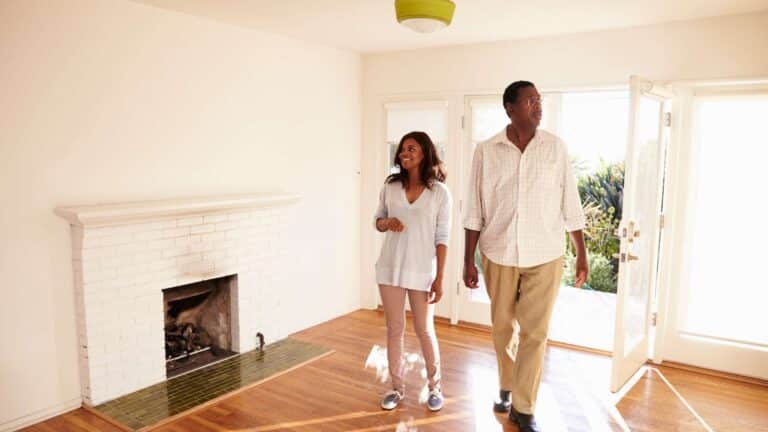Table of Contents
Homeownership often feels like a never-ending series of decisions. From landscaping to lighting, there’s always something you can improve. But not every home upgrade is worth the investment. Some upgrades offer little value in return, while others can significantly enhance your home’s functionality and comfort, all while increasing its resale value.
Understanding return on investment (ROI) is crucial for making informed decisions. In the world of home upgrades, ROI isn’t just about increasing the home’s market value — it’s also about how the upgrade improves your daily life. Some home improvements bring lasting value, making your home more comfortable, efficient, and enjoyable for years to come.
This blog will guide you through the highest ROI home upgrades for daily life — the changes that save you money, enhance your living experience, and provide lasting value. We’ll cover everything from simple kitchen tweaks to more significant investments like energy-efficient technologies, showing you how these upgrades can make your home a better place to live while saving you money in the long term.
What is ROI and Why Does It Matter for Home Upgrades?
Defining ROI for Home Improvements
When we talk about ROI (Return on Investment) in the context of home upgrades, we’re referring to the value you get back from an upgrade compared to what you spent. A simple way to think about this is by considering how much an improvement will increase your home’s resale value versus the cost of the upgrade itself. If you spend $10,000 on a kitchen remodel and increase your home’s value by $15,000, you’ve achieved a solid ROI.
However, ROI also goes beyond the sale price. For many homeowners, ROI also refers to the improvement in quality of life that occurs in the house after the upgrade. For example, installing a new water-saving showerhead might cost $100 but can save you hundreds over time in reduced water bills — not to mention improving the daily comfort of your shower.
Understanding ROI helps you make smarter choices. Some upgrades, like replacing old windows or insulating the attic, can save you significant amounts on energy bills, while upgrading flooring or remodeling a bathroom can increase the aesthetic appeal and functionality of your home.
How to Calculate ROI for Home Upgrades
Calculating the ROI of a home upgrade involves comparing the cost of the upgrade to the financial benefits it provides — either through increased home value or long-term savings. There are several online calculators and methods to estimate ROI for specific upgrades, but a general rule of thumb is to consider the payback period.
For instance, if a home upgrade saves you $200 per year on energy costs and the upgrade cost $2,000, your payback period would be 10 years. In this example, the ROI is measured by the money saved each year and the number of years it will take for the savings to cover the initial investment. This approach helps you choose upgrades that deliver the best value per dollar spent in both immediate savings and long-term benefits.
The Highest ROI Home Upgrades for Daily Life
Kitchen Remodels — Where to Spend and Where to Save
The kitchen is often called the “heart of the home,” and for good reason. It’s a place where families gather, where meals are prepared, and where a lot of time is spent. Because of its central role in daily life, kitchen remodels offer some of the highest ROI in terms of both functionality and home value.
However, not all kitchen upgrades are created equal. For instance, upgrading appliances to more energy-efficient models can drastically reduce your monthly utility costs, while replacing countertops or installing new cabinetry can increase your kitchen’s aesthetic appeal. However, it’s essential to allocate your budget to the most impactful areas that enhance both the daily use and resale value of the home.
To get the most ROI from a kitchen remodel, focus on small, smart upgrades: replacing old appliances with energy-efficient ones, updating light fixtures for a modern look, and adding storage solutions that increase functionality. Avoid overspending on high-end brands for things like fancy backsplashes or marble countertops, unless you’re planning to sell in the near future. Simple changes can bring dramatic improvements without draining your savings.
Bathroom Upgrades: Small Changes, Big Impact
Bathrooms are another area of the home where small updates can provide a significant return on investment. A bathroom remodel doesn’t necessarily mean gutting the whole room — minor upgrades such as new fixtures, fresh paint, and modern tile can instantly elevate the space and improve its functionality.
For example, installing a water-saving showerhead or upgrading to an energy-efficient water heater will reduce water bills and make your home more sustainable. In addition to the savings, these improvements increase the comfort of the bathroom, making it a more relaxing and enjoyable place to be.
The ROI of bathroom upgrades also comes from aesthetic appeal. Even a modest remodel — such as replacing old cabinetry, adding a new vanity, or installing a new mirror — can transform the space and make it feel much more luxurious. Many buyers are willing to pay more for a home with an updated, stylish bathroom.
Adding Energy Efficiency Features
When it comes to energy-efficient upgrades, the return on investment isn’t always immediate, but the long-term savings are significant. Smart thermostats, LED lighting, and high-efficiency windows are just a few examples of how homeowners can save money on their monthly utility bills.
One of the best energy-saving upgrades you can make is replacing your old HVAC system with a newer, more efficient model. In fact, energy-efficient HVAC systems can cut cooling and heating costs by up to 50%, depending on your home’s size and location. Additionally, solar panels or insulating your attic are great long-term investments that can help your home run more efficiently, ultimately saving you money each month.
Improved Storage Solutions
Homebuyers and homeowners alike place a high value on storage space. Adding built-in storage solutions, such as closet organizers, pantry systems, and garage shelving, can significantly improve the functionality of your home and reduce clutter.
Storage upgrades make life easier, and they also increase the overall value of your home. Whether you’re creating a walk-in closet or installing better shelving in your garage, you’re adding usable space to your home. This kind of improvement is particularly appealing to buyers, especially if your home feels small or cramped.
Simple organizational tools like under-bed storage or modular closet systems can help optimize available space and make your home more efficient. Not only do these improvements make your daily life easier, but they also pay off when it’s time to sell.
Flooring Upgrades — Style, Durability, and Value
Your choice of flooring can dramatically affect the look and feel of your home. Hardwood floors, luxury vinyl, and tile are all popular choices that offer excellent ROI. These materials not only provide long-term durability but also elevate your home’s aesthetic appeal.
While carpet is inexpensive initially, it tends to wear out quickly and requires frequent replacement. By choosing durable flooring options like hardwood, ceramic tile, or laminate, you can enjoy long-lasting beauty without the constant upkeep. Additionally, these flooring choices are highly desirable to buyers because of their timeless appeal and ease of maintenance.
When upgrading your flooring, it’s important to consider both style and practicality. If you’re upgrading an entryway or kitchen, tile may be a better option because it’s more water-resistant, while hardwood can add warmth and charm to living areas or bedrooms.
Read: Upgrading Your Home on a Budget: Where to Splurge Mindfully and Save Like a Pro
Home Upgrades that Improve Daily Comfort and Convenience
Smart Home Technology
Home technology is no longer just a luxury; it’s becoming a must-have for modern homeowners. Smart home technology offers convenience, security, and efficiency. Devices like smart thermostats, smart locks, and smart lighting make everyday tasks easier and more energy-efficient.
For example, a smart thermostat allows you to program your home’s temperature, saving money on heating and cooling by adjusting settings based on your schedule. You can even control your thermostat remotely, which means you can cool or heat your home before you even arrive.
Investing in home security cameras or smart doorbells adds a level of safety and peace of mind, particularly for families. These upgrades not only improve your daily life but also add value when it’s time to sell. Homes with smart technology are highly appealing to tech-savvy buyers.
Open Floor Plans and Better Layouts
In many homes, the layout can make or break how the space is used. Creating an open floor plan or improving the flow of your home by knocking down unnecessary walls can drastically improve daily comfort. Open spaces feel larger and allow for more flexibility in how rooms are used.
An open floor plan creates better movement and visual appeal, making the home feel more inviting. It also makes multitasking easier — for example, cooking in the kitchen while keeping an eye on children in the living room. Investing in structural changes like opening up the kitchen, living, and dining areas can also increase the overall value of your home.
Outdoor Living Spaces and Curb Appeal
Upgrading your outdoor living space can significantly improve both your enjoyment of the home and its resale value. Creating a deck, patio, or garden area adds a new room to your house — one that’s perfect for entertaining or simply relaxing. Even something as simple as landscaping or installing outdoor lighting can boost curb appeal and enhance your home’s first impression.
Outdoor upgrades add usable space and enhance your lifestyle by allowing you to enjoy the outdoors. These upgrades not only make your home more enjoyable but can also yield a high ROI when selling. Homes with well-maintained outdoor spaces often command higher prices, as many buyers are looking for homes that offer both indoor and outdoor living.
What Home Upgrades Offer the Best ROI for Long-Term Savings?
Insulation and Weatherproofing
Upgrading your home’s insulation is one of the best ways to save on monthly utility bills. Insulating the attic, installing weather stripping, and upgrading windows to energy-efficient models can drastically reduce your heating and cooling costs. This is a one-time investment that pays off year after year.
Good insulation helps your home stay cooler in the summer and warmer in the winter, preventing heat from escaping during the colder months and keeping it out during hot weather. While these upgrades can be costly upfront, they deliver a high ROI by cutting your monthly utility bills and making your home more comfortable.
Tankless Water Heaters
A tankless water heater offers significant energy savings over traditional water heaters. Instead of heating water constantly and storing it in a tank, a tankless water heater only heats water when needed, reducing wasted energy.
Although the initial installation cost can be high, a tankless water heater can save homeowners hundreds of dollars annually on energy bills. Over time, the savings make this upgrade a wise investment for both financial reasons and the environment.
Upgrading to High-Efficiency Appliances
Appliances like dishwashers, washing machines, and refrigerators are major contributors to your monthly utility bills. Replacing old appliances with high-efficiency models can drastically reduce your water and electricity consumption.
Many modern appliances come with Energy Star ratings, which guarantee lower operating costs and better energy efficiency. While these appliances may cost more upfront, the savings on your utility bills quickly offset the initial expense, making them a smart long-term investment for your home.
How to Make Sure Your Upgrades Align with Your Budget?

Creating a Home Improvement Budget
Creating a budget for home upgrades is key to ensuring you don’t overspend. By determining which improvements will have the highest ROI, you can allocate funds accordingly. Whether it’s adding a new HVAC system or installing energy-efficient windows, Beem’s Budget Planner can help you set aside a portion of your savings for home improvements.
Budgeting for upgrades ensures you’re not only spending wisely, but also prioritizing the improvements that will bring the most value to your home. By tracking your spending and setting limits, you can make sure you don’t overspend and stay on track with your goals.
Finding the Right Balance Between Quality and Cost
When it comes to home upgrades, quality doesn’t always mean high price. Finding the right balance between quality and cost is key. Some upgrades, like luxury flooring, can be pricey but add significant value, while others, like paint and DIY projects, offer high ROI without the need for a large budget.
It’s essential to know where to splurge and where to save. Focus on upgrades that will provide the most benefits and the longest-lasting results, but be strategic in areas where a less expensive option can still achieve the desired result.
Prioritizing Upgrades Based on Lifestyle and Home Use
It’s important to evaluate your family’s lifestyle and prioritize upgrades that will directly benefit daily life. If you have a growing family, storage solutions might be your biggest priority. If you work from home, upgrading your office space or adding better lighting might be more valuable.
By aligning your upgrades with how you use the home, you ensure that the improvements make sense for your specific needs. Consider not just the value to your home, but also the value to your life.
Real-Life Examples and Case Studies
Family Home Transformation with Kitchen and Bathroom Updates
A family with two kids decided to invest in a kitchen and bathroom remodel. The kitchen upgrades included modern appliances, better lighting, and new countertops. The bathroom remodel focused on better storage and water-efficient fixtures.
These improvements didn’t just increase the home’s market value by $10,000, they made daily living easier and more enjoyable. The family found that cooking and cleaning became more efficient, and the kids enjoyed having a more spacious and comfortable bathroom.
Small Condo Owner Who Maximized Storage and Energy Efficiency
A condo owner in a small apartment used smart storage solutions and energy-efficient appliances to make the most of limited space. They invested in a wall-mounted air conditioner, energy-efficient lighting, and modular storage units.
These upgrades saved on energy bills and reduced the feeling of clutter. By strategically maximizing the space, the condo felt bigger and more functional, increasing both daily comfort and resale value.
DIY Landscaping and Outdoor Space Improvement for Long-Term ROI
A homeowner invested in a DIY landscaping project, adding a small deck and upgrading their garden. These outdoor improvements increased the home’s curb appeal and provided a new space for outdoor relaxation and gatherings.
By choosing budget-friendly materials and focusing on planting native plants, the homeowner created an inviting, low-maintenance outdoor space that increased both enjoyment and home value.
Conclusion
When it comes to home upgrades, making informed choices about what to invest in can make all the difference. Whether it’s improving energy efficiency, updating key rooms like the kitchen or bathroom, or optimizing your outdoor living space, small investments in the right upgrades can lead to significant savings and enhanced comfort.
By carefully considering ROI — both in terms of financial value and lifestyle benefits — you can make your home a better place to live and a smarter long-term investment. With Beem, you can manage your spending effectively using instant cash access, a secure smart wallet, the Beem Card for spending and credit building, and a personal AI assistant. These tools help you plan purchases, track costs, and ensure home improvements stay on budget.
Download the Beem app today to tackle home upgrades confidently while keeping your finances in check.















































